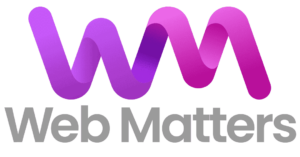Website usability is making sure barriers are not placed between the end user and the technology they operate. It is about making your website ‘user friendly’. There is a lot of reading available online about usability issues so I will only touch on some of the main issues.
Web designers are always looking to raise the bar, whether it is for the screen resolution they can design for, or which old browser they can forget about! Over the years many web designers have suffered considerable stress from making sure a website complies with multiple browsers with different versions, running on various operating systems. Most web design companies will draw a line in the sand about the level of compatibility they will design for. So it is best to let your designer know if you have any specific cross browser / OS compatibility requirements.
So what is good website usability?
Good website usability is about good web design practices. It is making sure that visitors don’t leave the website before it has fully loaded because it is taking too long, that they can navigate their way around the site, that they can find the information they are looking for, they know what you do, and they can contact you easily.
- Consistent Design & Navigation
- Fast Loading Pages
- Text is easy to read
- Images look good
- Don’t have to scroll horizontally to see the page
- It’s obvious what the website is about
- There is a site map or a search function
- Links are underlined
- Contact details are obvious
Consistency in Design & Navigation
Maintain a consistent design throughout the website. It is ok to change areas of the design such as images or color swatches, but at no time should a visitor think they have actually gone to a different website. With navigation systems make sure that you keep the same primary navigation (top level) system in the same place throughout the site, no one should ever go looking for your top level website links.
Other Navigation Issues
- Text Navigation
Always make sure there is a text only version of your primary navigation system (your main menu). This ensures that the majority of users can navigate around your website, and it makes it easier for search engines to follow the links so that all of your pages can be indexed. - Mystery Meat Navigation
Do not use ‘mystery meat’ navigation; this is just pointless and in our opinion just a bit pretentious. If your designer tells you that it makes the user ‘engage’ with the website, fire them! For those of you who are new to the term ‘mystery meat’ it apparently originated from school cafeterias, where students where not sure what the meat being dished up really was!When used to describe a navigation system, it means that there is no indication of where a link goes until you put your mouse over an image, as the image has a ‘mouse over effect’ and another image is displayed with the page name. Once you take your mouse off the image it goes back to the original image (which is often something abstract). If you are anything like me, as soon as you take your mouse off the image you completely forget where the link was going.
- Put your main menu on the Left
Most website users expect to see the main navigation system on the left hand side of the screen. You won’t alienate anyone by putting it on the right, but to be on the safe side, keep it to the left. With most languages we read from left to right, so we have become used to scanning a website from left to right.
Usability is making sure barriers are not placed between the end user and the technology they operate. It is about making your website ‘user friendly’. There is a lot of reading available online about usability issues so I will only touch on some of the main issues.
Download Time – Keeping it Snappy!
The top complaint regarding web sites is download speed. Even with the up take of broad band Internet, the vast majority of internet users are still on dial up connections of 56KB. With a 56KB modem a page that is 35KB in size will take approximately 5 seconds to completely download. A 15 to 20 second download wait is probably far too long for the average web user who is generally very impatient. Most usability experts recommend that a page is no larger than 50kb in size. This includes the file size of the actual html page and the images that are downloaded when it is displayed.
Make sure your text is readable!
Don’t use teeny tiny text for the main content. It’s ok to use it for ‘fine print’ sections like disclaimers and copyright notices (who wants to read them anyway).
Generally most commercial web sites will use a white background and a dark gray or black text color for the text. There is a good reason for this – it makes a website easy to read. Ask yourself this, when was the last time you bought a 500-page novel that was printed on black paper with white text?
With fonts, most commercial sites will stick to a sans serif font like Verdana or Arial. These fonts are more legible on the screen. However, serif fonts are more legible in print (just pick up any newspaper). Probably the most usable combination online is a Verdana Size 2 font (around 12 pixels or 10 points).
My recommendation is pretty simple, use a white background with dark text that is formatted in a sans serif font and is easy to read (no tiny text – yes, it is my pet peeve).
Splash Pages
Splash pages are highly stylized opening pages to a website that usually have no or very little text on them. Splash pages are meant to be pretty, but that is all that they do, and many people find them rather annoying. Splash pages also make it harder for your website to rank well on the search engines. Flash ‘splash pages’ are a double whammy – just don’t do them.
Horizontal Scrolling
Make sure that your entire website can be seen horizontally with out the need to scroll. Vertical scrolling is fine, and there is even some suggestion that longer pages work better than shorter (apparently more text sells more).
Poor Image Quality
Make sure the images look sharp and attractive. Poor image quality can mean a bad first impression.
Describe what you do!
It is amazing how many times you can go to a website, read the first page, and still not be sure what the website is about. So spell it out loud and clear. Your visitors will appreciate this and it will also help with your keyword frequency (for the search engines).
Site Map
Include a site map on your website to help with navigation. If your site is large (over 100 pages), then you should think about adding in a search function.
Underline links but nothing else
Most people know that underlined text on a website is a link. If you underline something that is not a link you will confuse and frustrate your visitors.
Contact Details – Make them obvious
If the purpose of your website is to have people contact you then make your contact details really obvious. For travel web sites in particular, I recommend adding your contact details to the bottom of every page as many travelers carry print outs of your website and need to contact you offline.

